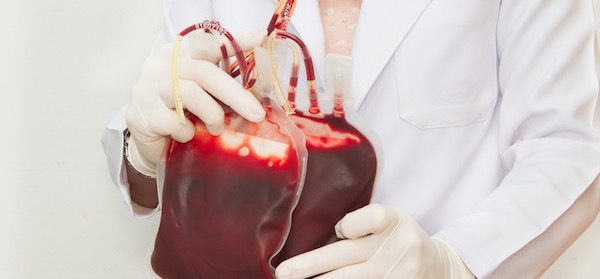When living in the United Kingdom (UK) I was a regular blood donor – every 13 weeks I would head off to the local blood bank, deliver my pint of the red stuff and enjoy the orange juice and biscuit that followed.
However, since moving to Australia, this ‘pleasure’ has been taken away from me – all because I lived in the UK during the time when mad cow disease (Creutzfeldt-Jakob disease (CJD)) was apparently rife – although there have only been 177 cases to date.
The dates in question are between 1 January 1980 and 31 December 1996 and I, like thousands of others who lived in the UK for a cumulative period of six months during these dates, have been told my blood is not wanted.
Why? Because there is no test for the human form of mad cow disease. While it’s suspected that one in 2000 people living in the UK during this time have CJD lying dormant in their gut, the likelihood is that in the majority of people the disease will probably never attack the brain. Therefore the need to develop a test is perhaps seen as unnecessary.
“Well, I’m glad you’re not allowed to give blood”, I hear you say. Why should our blood supply be polluted with a potential life-threatening disease? And that’s a fair point, however, if you’re one of the many thousands of Australians who visit the UK each year, there is nothing that will prevent you being given blood in the case of an emergency. And if the UK blood service has decided that the risk is minimal, why does the Australian Red Cross Blood Service think differently? It’s not as if there’s a rush of people willing to give blood.
So, in National Blood Donor Week, let’s take a look at the numbers.
· In a population of 24 million, only 606,000 give blood – that’s just over three per cent.
· One-in-three Australians will need blood products in their lifetime.
· One blood donation can save up to three lives.
· More than 25,000 donations of blood are needed each week – currently there are 6178 (whole blood, plasma and platelets).
· In the next 10 years, the demand for blood products will grow by 100 per cent.
While I have resigned myself to not being able to experience the joy of helping others through donating blood, I can’t help but think that saving someone’s life in the here and now is a better option than worrying about contracting some disease that is highly unlikely to develop in any case.
Find out if you can give blood
Related articles:
Set up a medical ID on your phone
How one man’s kidney saved seven lives

